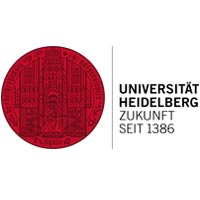

The formation of protein complexes is a highly organised process that does not begin with the “finished” proteins. Studies conducted by researchers at the Center for Molecular Biology of Heidelberg University (ZMBH) and the German Cancer Research Center (DKFZ) demonstrate that they already form in a coordinated way when the protein subunits are synthesised.
“Our findings fundamentally alter our understanding of how biologically active protein complexes form in the cell,” reports Prof. Dr Bernd Bukau. The results were published in “Nature”.
Biological processes in cells are driven by thousands of different proteins that are assembled into functionally active protein complexes. The proteins are actually manufactured on the so-called ribosome, which catalyses protein biosynthesis. During the process, amino acids are assembled into chains and folded to form the protein.
“Until now we assumed that the subunits of the protein complexes found one another through diffusion and random encounters,” states Prof. Bukau, who heads the “Biogenesis and Quality Control of Proteins” research group at the ZMBH and the Division of Chaperones and Proteases at the DKFZ.
Experiments conducted by Dr Ayala Shiber on eukaryotes present a different picture, however. The growing protein chains are already bound by other subunits so that protein manufacture and the formation of biologically active protein complexes can be temporally and spatially coordinated.
This ensures efficient complex formation, according to Dr Shiber, the lead author of the study. The molecular biologist from Israel and Alexander von Humboldt fellow is a member of Prof. Bukau‘s research group and works at the “Cellular Surveillance and Damage Response” Collaborative Research Centre (CRC 1036) at Heidelberg University.
Contact:
Heidelberg University
Communications and Marketing
Press Office, phone +49 6221 54-2311
presse@rektorat.uni-heidelberg.de
Prof. Dr Bernd Bukau
Center for Molecular Biology of Heidelberg University (ZMBH)
Phone +49 6221 54-6795
bukau@zmbh.uni-heidelberg.de
A. Shiber, K. Döring, U. Friedrich, K. Klann, D. Merker, M. Zedan, F. Tippmann, G. Kramer and B. Bukau: Cotranslational assembly of protein complexes in eukaryotes revealed by ribosome profiling. Nature (published online 29 August 2018), doi.: 10.1038/s41586-018-0462-y
http://www.zmbh.uni-heidelberg.de/bukau
http://www.dkfz.de/en/chaperone-proteasen/index.php
http://www.zmbh.uni-heidelberg.de/sfb1036












